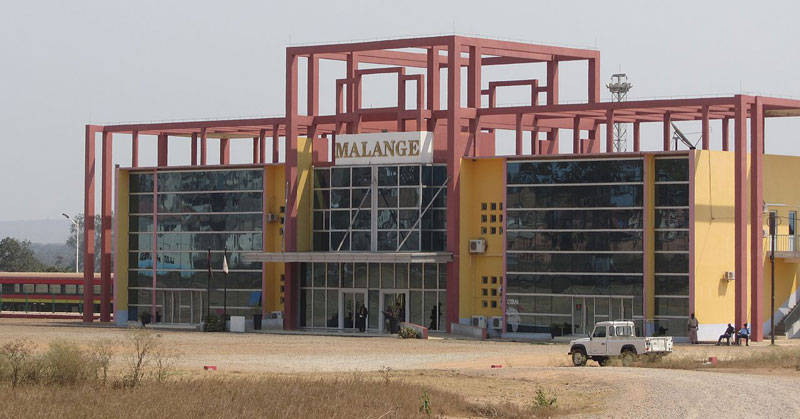With the airport and railway reopened, and new roads being built, Malanje is on track to becoming one Angola’s main transport, logistics and industrials hubs, as envisioned by the local and national governments

Revenues generated from Angola’s oil and mineral resources are being used to rebuild infrastructure that was damaged or destroyed during the civil war that ended in 20002, as well as to develop brand new ports, airports, schools, hospitals, roads, railways, and water and power networks.
With the establishment of the Malanje Corridor and the decision by the national government to make Malanje Province a strategically placed transport, logistics and industrial hub, it is one of the priority areas for infrastructure rebuilding and development. In the last few years, the airport and railway have reopened, new roads, schools and hospitals have been built, and the number of people with access to power and clean water continues to rise. The private sector has strongly supported these efforts: companies from Angola, Brazil and China are behind the development of much of the transport infrastructure in the province, such as the refurbished railway.
Angola’s trains grinded to halt during the long-running civil war, but the reopening of the Luanda-Malanje railway in 2011, after it had been out of action for 18 years, was a testament to the rebuilding process in the province and the concerted efforts of the people, the government, and the privates sector to get it running again. “Because we have the railroad that can serve the neighboring provinces instead of going to Luanda, Malanje can easily operate as a support hub for the eastern provinces,” explains Governor of Malanje Province Norberto Dos Santos.
A Chinese company was behind the reconstruction the Luanda-Malanje railway, which will mark its 130th anniversary next year. Some have been reluctant to use the line because of the long journey time (eight hours), but the governor points out that a plan has been drafted to improve circulation, reduce travel time and increase the use of the line.
Like the Luanda-Malanje railway, Malanje airport was built during the colonial era, but had been put out of service due to the civil war. It was reopened a year before the railway, in December 2010, and Minister of Transport Augusto da Silva Tomás was on hand to cut the red ribbon on a brand new airline facility—as was the former Governor Boaventura Cardoso, who said that the re-inaugurated airport would solve transportation problems and that its reopening was an “accomplished dream for local citizens.”
Also vital to solving transport problems in this province is the development of the road network. The construction and renovation of primary, secondary and tertiary roads and bridges are a priority under terms for Malanje’s development and under the Southern African Development Community’s Malanje Corridor program, which entails the rehabilitation of the corridor (rail and road) between Luanda and Malanje and onward to Cabinda Province and DR Congo. Within the province itself, the rebuilding and building of roads connecting the capital city to the 16 municipalities of the province have been ongoing since 2012.
“The roads are another of our priorities precisely because they facilitate the movement of people and goods; and, during the third stage, we want to widen the current narrow roads and turn them into highways,” says Governor Dos Santos.
Beyond transport infrastructure, social infrastructures such as new schools, houses and health centres have been constructed; and the water and power networks have been expanded. Investment in electricity has increased capacity in the cities of Malanje and Cacuso by 56% since 2012, from 16MW to 25MW; and National Rural Electrification is helping to light up the rest of Malanje, through the extension of the existing networks.
“With electricity, education, and functional roads, the province has the chance to develop more easily,” says the governor. “Only through the combined efforts of everyone can Malanje be restored and move on toward development in terms of water, electricity, roads, schools, hospitals and other social facilities that are essential to the wellbeing of our people.”
0 COMMENTS